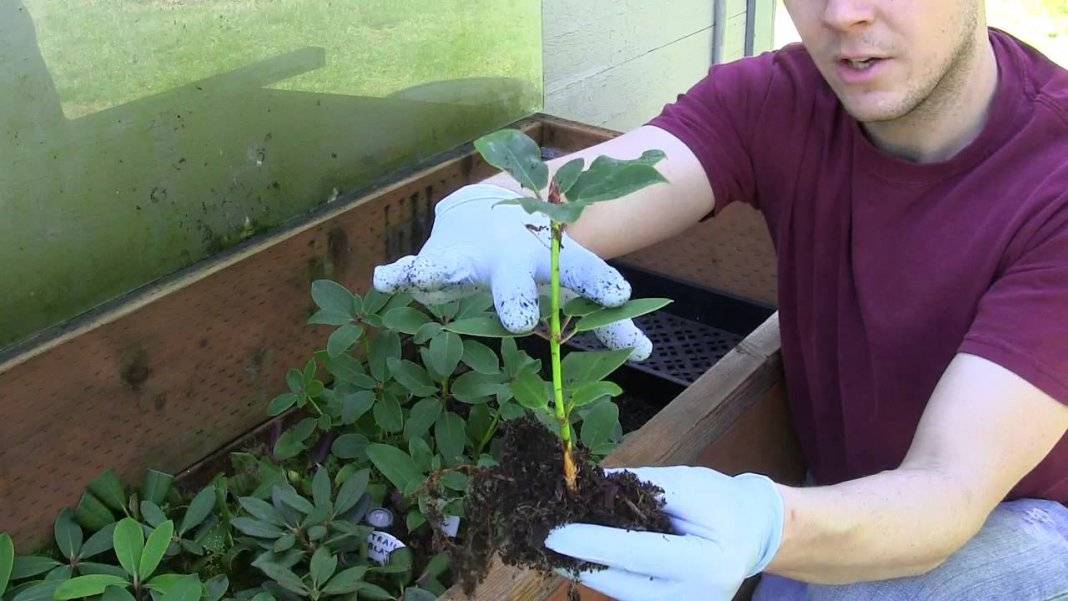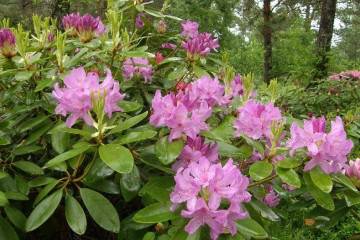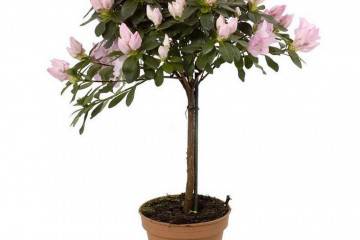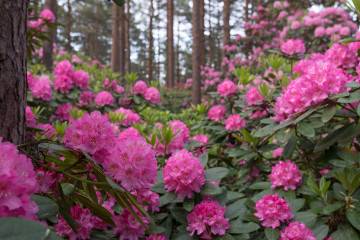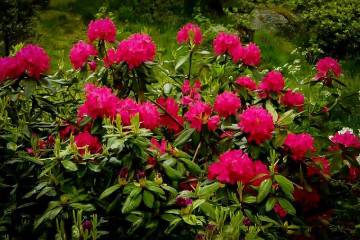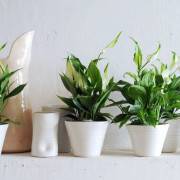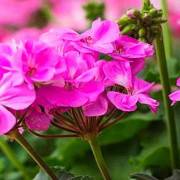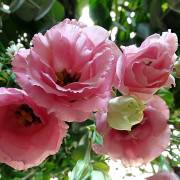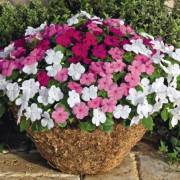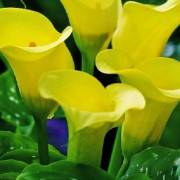Rhododendron pink hybrid
Content:
Rhododendron is a thermophilic deciduous shrub, the pride of resort towns. Low-growing varieties are winter-hardy, adapt well in the middle zone, grow in the Urals, in Siberia. Knowing the intricacies of growing rhododendron, it is not difficult to create acceptable conditions for a flower.
Types and varieties of culture
Breeders annually present new hybrids to flower growers. There are over 1000 species of these evergreen and deciduous shrubs of the heather family. Brief description of popular varieties.
Helsinki University is a frost-resistant hybrid rhododendron of Finnish selection. The height of the bush is 1.2–1.7 meters, the crown is dense, spherical. Blooms for two to three weeks in mid-summer. The leaves are large, leathery, up to 15 cm long, up to 6 wide. The buds are pale pink, large, up to 8 mm in diameter. Form inflorescences of up to 15 flowers with wavy edges of the petals.
The elegans or pink rhododendron variety is a thermophilic evergreen hybrid with large (up to 10 cm in diameter) funnel-shaped flowers. Shoots reach 3 meters in height. Young foliage has a dark red hue, while mature foliage has a rich dark green.
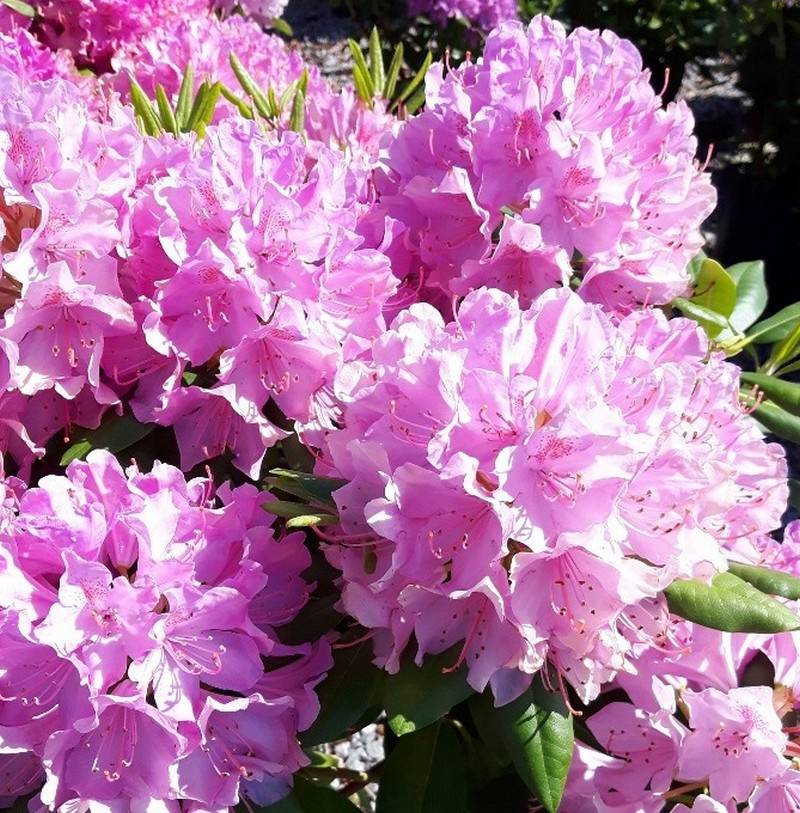
The elegant inflorescences of the Elegans rhododendron stay fresh for 20-23 days. They are used for cutting, ornamental cultivation
Roberta de Belder is a relatively short bush from 1 to 1.5 meters, carpate inflorescences, up to 20 flowers. The buds are bell-shaped, creamy with a characteristic raspberry border, up to 7 cm in diameter. Early flowering variety, blooms at the end of May. Frost-resistant, hibernates in the middle zone, where the temperature does not drop below -20 ° С
America. This rhododendron is red and grows up to 2 meters. Blossoms in May, blooms for a month. The variety was bred in 1902 and is still grown in warm regions of the country.
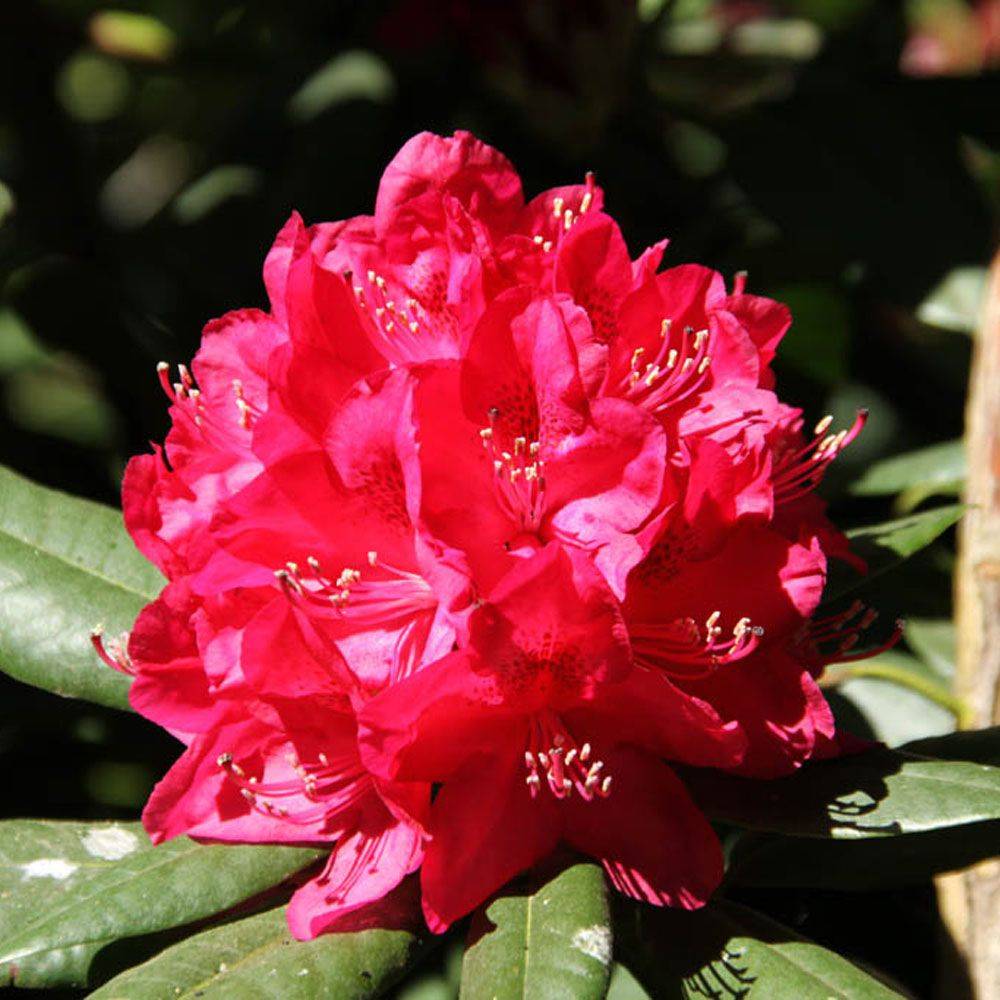
Red-ruby buds with golden stamens look decorative, dark purple spots on the upper petal add contrast
Humboldt grows up to 4 meters high, forms a spherical bush up to 3 meters in diameter. It belongs to evergreen species, forms inflorescences up to 15 buds. Loves partial shade, frost-resistant rhododendron, winters in regions where it is -29 ° C. It is used to decorate Japanese rocky gardens.
Dombay or Caucasian rhododendron is white, the height of the bush is from 1.5 to 2.5 meters, depending on growing conditions. Loves wet places, acidic soil. On the basis of the variety, the Pontica line was bred, the most popular hybrid is Cunningham's White with boiling white flowers that retain snow-white in the rain.
Rhododendron arborescens, officially the name of the American culture Rhododendron arborescens. This is a real spreading tree with ovoid or oval leaves. Flowers have a fragrant aroma, small, from 3 to 6 cm in diameter, collected in small inflorescences. It blooms in mid-summer, winter-hardy, grows well in the suburbs, but does not grow above 2.5 meters. A popular hybrid is Tarandt of German selection.
Reproduction of the rhododendron plant
Gardeners practice cutting and planting the bush by layering - they pin the lower shoots to the ground to form a root bundle. Then the layers are cut off from the mother bush, transferred to a new place.
The cuttings are rooted at home.In the middle of summer, biennial shoots are cut from adult bushes. After aging in a growth stimulator, they are placed in planting containers. After 4 weeks, the root system will form. At the end of September, the bushes are planted in deep containers. For the winter, they are removed to the basement or insulated loggia.
What time is it preferable to plant rhododendron
Where there is no frost, the bush is transferred to a new place in the fall so that it will release its first buds the next year.
In regions with a temperate climate, spring planting is practiced. As practice shows, in winter, young shoots die, not having time to root well.
Landing in open ground
The bushes are planted in pre-prepared pits, they are made twice deeper than the height of the earthen coma, and three times wider. The roots of the rhododendron are superficial, expanding in breadth. The pits are half filled with the prepared substrate. The seedling is transferred by the transfer method, without destroying the earthen coma. Finally, they are covered with a substrate, watered well. Cover with a cut plastic bottle to create a greenhouse environment.
Planting site, soil requirements
Rhododendron loves flooded areas, grows well with a high occurrence of groundwater. A plant native to subtropical forests is chosen for planting in a garden protected from the north wind. The bush perfectly coexists with trees with deep roots: oaks, conifers. Although many hybrids are unpretentious in terms of acidity, in vivo rhododendrons prefer acidic soil with a pH of 4.5–5.5.
For the planting substrate, unripe peat, compost soil and leaf soil are mixed in a 2: 1: 1 ratio.
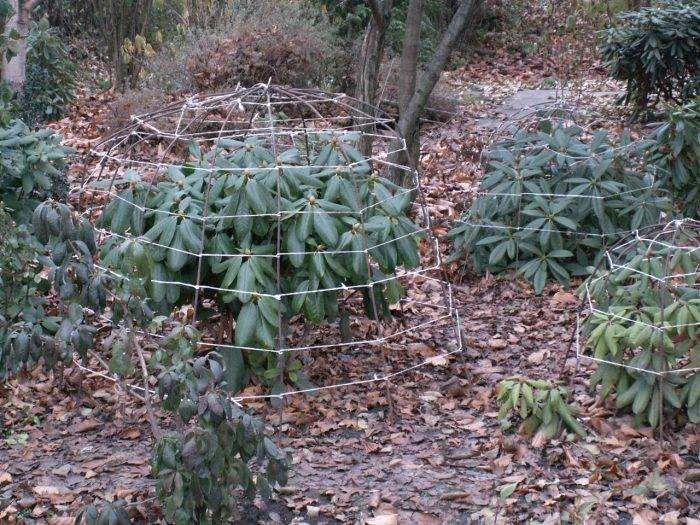
Wire frames are covered from above with burlap or dense acrylic in two or three layers so that the shoots do not break under the weight of the snow
Features of growing in cold climates
There are some peculiarities for growing at low temperatures:
- in the middle lane for the winter they make shelters for the bush, flexible stems can break under the weight of icing, snow cover, from strong winds;
- the roots do not deepen, but slightly bare the root collar when planting, so that they do not rot;
- for irrigation in the summer they use warm, settled water. After watering, the soil is loosened so that a crust does not form. After loosening, the soil is sprinkled with mulch.
Rhododendron care
The flower does not need to be constantly looked after, the main thing is to water, feed, clear of weeds, and provide air access to the roots.
Autumn care
After flowering, all inflorescences are broken off, the plants are fed one last time a month before frost. When the first snow appears, shelters are made.
Pruning bushes
Sanitary cutting is carried out on a green cone, old branches are removed above the growth point by 1 cm. The places of the cuts are treated with crushed coal or garden pitch.
Watering and feeding
Moisten the soil as it dries. The bushes are watered often, but little by little. Top dressing is applied 3 years after planting. In the spring, the plant is given nitrogen, in the summer with a monthly interval - complex feeding.
Diseases and pests
Despite proper care, beautiful rhododendrons develop fungal diseases:
- rust;
- spotting.
At the initial signs of the disease, they are treated with fungicides. Deep loosening helps with chlorosis. In case of bacterial cancer, the plant is completely removed.
From weevils, spider mites, scale insects, they are relieved with intestinal-type acaricides.
Thus, in central Russia, in the regions of Siberia, the Urals, gardeners admire rhododendrons, by the size of the bushes they choose undersized (up to 80 cm) and medium-sized (up to 1.5 meters). If you make shelters for the winter, the bush will not freeze or be damaged. All flower shoots will be preserved.


